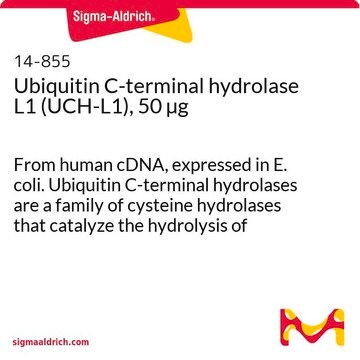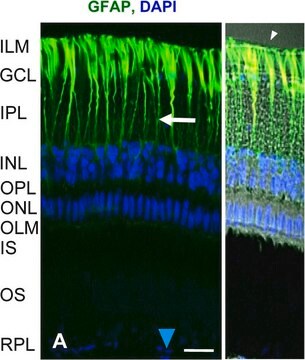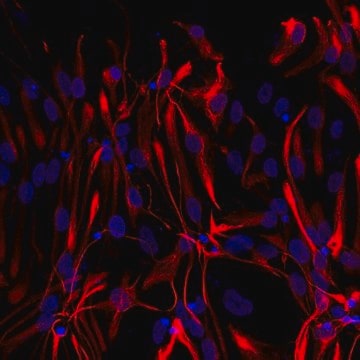AG230
Glial Fibrillary Acidic Protein, porcine
Synonym(e):
GFAP
About This Item
Empfohlene Produkte
Biologische Quelle
Porcine
Qualitätsniveau
Assay
>99% (pure GFAP)
Form
liquid
Mol-Gew.
calculated mol wt 49.44 kDa (428 a.a. spliced isoform; NP_001231326)
calculated mol wt 53.63 kDa (468 a.a. spliced isoform; XP_005668766)
Hersteller/Markenname
Chemicon®
Konzentration
1 mg/mL
Methode(n)
ELISA: suitable
radioimmunoassay: suitable
western blot: suitable
NCBI-Hinterlegungsnummer
UniProt-Hinterlegungsnummer
Versandbedingung
dry ice
Angaben zum Gen
pig ... GFAP(396562)
Allgemeine Beschreibung
Physikalische Form
Lagerung und Haltbarkeit
During shipment, small volumes of product will occasionally become entrapped in the seal of the product vial. For products with volumes of 200 μL or less, we recommend gently tapping the vial on a hard surface or briefly centrifuging the vial in a tabletop centrifuge to dislodge any liquid in the container′s cap.
Hinweis zur Analyse
Rechtliche Hinweise
Lagerklassenschlüssel
12 - Non Combustible Liquids
WGK
WGK 2
Flammpunkt (°F)
Not applicable
Flammpunkt (°C)
Not applicable
Analysenzertifikate (COA)
Suchen Sie nach Analysenzertifikate (COA), indem Sie die Lot-/Chargennummer des Produkts eingeben. Lot- und Chargennummern sind auf dem Produktetikett hinter den Wörtern ‘Lot’ oder ‘Batch’ (Lot oder Charge) zu finden.
Besitzen Sie dieses Produkt bereits?
In der Dokumentenbibliothek finden Sie die Dokumentation zu den Produkten, die Sie kürzlich erworben haben.
Unser Team von Wissenschaftlern verfügt über Erfahrung in allen Forschungsbereichen einschließlich Life Science, Materialwissenschaften, chemischer Synthese, Chromatographie, Analytik und vielen mehr..
Setzen Sie sich mit dem technischen Dienst in Verbindung.







